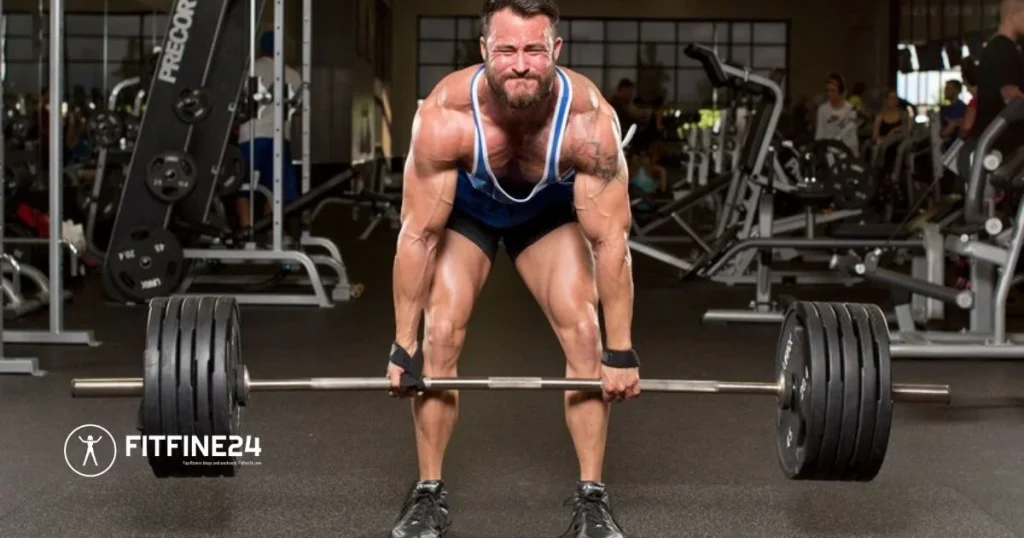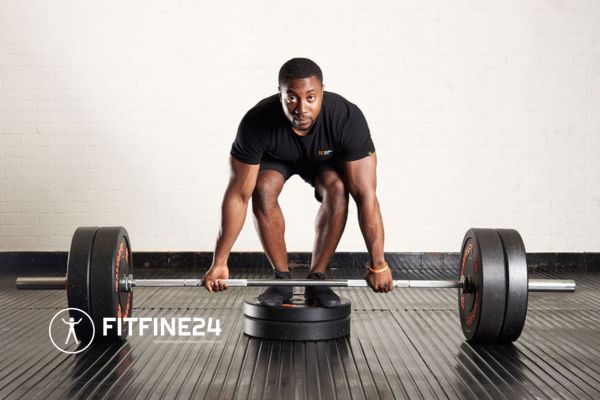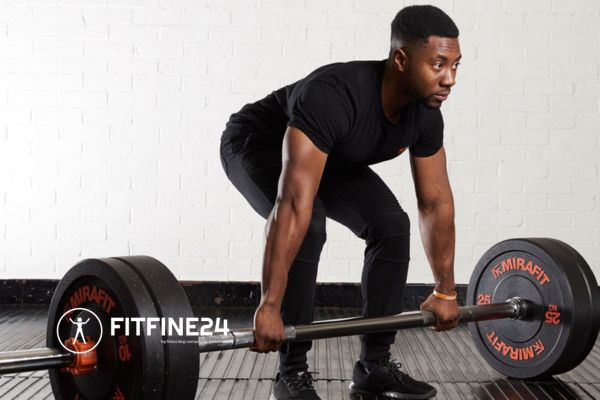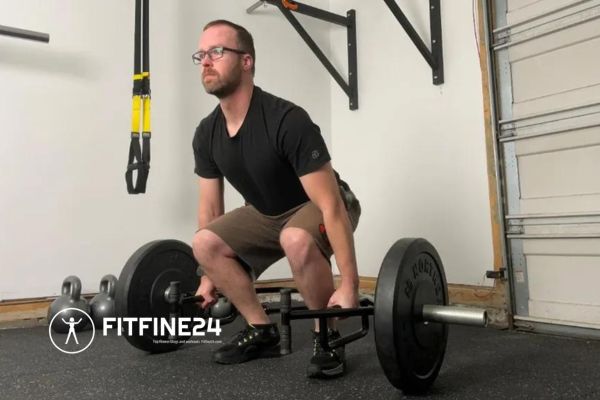
It is often said that Deadlift is the king of all lifts and there are lots of reasons that support this claim. This is a compound movement which means it involves nearly all muscle groups in the body and it makes it pliable in any strength training program. If you want to gain some muscles, enhance your body posture, or just want to improve your strength level in general automatically, Deadlifts are a must exercise that you should add to your exercises.
This article will serve as a source of informative guide on how to safely perform a deadlift by providing all the relevant information that includes but is not limited to the right technique, the benefits of the exercise, the do’s and the don’ts, and all that relates to deadlifts.
What is a Deadlift?
In short, a deadlift is lifting the loaded weights in the manner of the hips first bringing them up from the floor into the middle of the body, and then rolling the upper body back down making the bent leg straight to the knee. It is different from most other exercises because it works for many muscle groups in one step. This makes it one of the best movements in the building of strength and muscles.
What people love about deadlifts is the fact that they are easy to do. For any exercise to be complete and good, all that is required is a barbell and some weights. Hence even for starters or novice weight lifters, it is comprehensible.
Deadlifts and the Muscles Involved
There is an exercise where almost all the muscle groups are used. These include

Hamstrings: Bending and straightening of your knees is mainly done by the hamstring.
Glutes: The motion of raising the weight from the ground primarily engages the glutes and assists in developing the posterior chain.
Lower Back:It has proven to be very effective in building the lower back. This is particularly true of the erector spinae.
Core:The motion involves heavy contraction of the core muscles to prevent spinal flexion.
Traps & Lats:Upper limb and upper back muscles including the traps and lats, act as stabilizers to the shoulder girdle and assist in maintenance of correct joint position.
Forearms & Grip Strength: When grasping the barbell, the level of intensity for the forearms increases with the weight of the barbell used as well as doing their workout indirectly.
How to Perform a Deadlift Using the Right Posture
Most of the benefits of the deadlifts are impaired, and risks of sustaining injury are increased when deadlifts are done with poor form. Here’s a systematic approach to how the barbell deadlift is done in detail with proper technique:
Set Up the Barbell:Extend the legs forward to reach the barbell on the floor that is placed in front of the body. Feet are parallel and hip distance apart with the barbell resting above the midfoot.
Grip the Bar:Hinge forward at your hips and knees, and grab the barbell from the ground with your hands placed laterally outside your legs. Your hands can be placed facing you or you can utilize an alternate grip for greater strength – one hand palm up whilst the other is palm down.
Set Your Back: You are required to lift the load such that standing upright must be in existence. Brace your torso by bringing in your abs.
Lift the Bar:While standing up straighten your legs and try and push through the heel while making sure the bar is close to the body. Push your hips forward as you raise up and keep your back straight with your shoulder in its place.
Lower the Bar:When you get to a standing position straight, pull your butt even hunch more backward and lower the barbell to the floor again in an efficient way without a bounce.
Repeat:Adjust your position and do it again the required number of times.
Common Mistakes to Avoid
Deadlifts are a very effective exercise but are prone to causing injuries when not done properly. Here are some mistakes one needs to be cautious of

Rounding the Lower Back:One of the most common and dangerous mistakes while deadlifting is rounding the lower back. This puts a lot of stress on the spine and risks injury. Therefore, always keep your spine in its natural position by using your core muscles and lifting your chest.
Not Engaging the Core:Your core helps in securing your spine while performing deadlifts. Forgetting to lock your core might be the beginning of the end, as it creates instability that causes the body to be tortured.
Lifting with the Back Instead of the Legs: When hesitant power should be generated from the deadlift, the user is meant to rely on the legs and glutes, not the lower back. Pay attention to driving through your heels and bringing the hips forward in compliance with the weight bar overhead.
Pulling the Bar Too Far from the Body:Once the barbell is lifted, it should be kept as close as possible to the body while raising it. Pulling the bar out too much in the forward direction can lead the lower back to depression.
Locking Out in a Harness Too Early: Do not rush to lock your knees in the deadliest. Keep all body sections tight performing the lift then go on to lock out both the hips and the knees at the same time.
Deadlifts Benefits
There is a surfeit of reasons as to why deadlifts are referred to as one of the most beneficial exercises in any fitness routine. Here are some potential benefits

Full Body Strength: Full-body workouts with this exercise are possible since deadlifts involve the use of several muscle groups within the body at the same time.
Muscle growth:As it has been found out, deadlifts also have insatiable anabolic effects, such as provoking testosterone or growth hormone secretion to increase muscle mass.
Improved Posture:Deadlifts target the muscles of the back as well as the abdomen allowing for better posture and preventing further deterioration of posture-related problems.
Increase Athletic Power: Deadlifts also develop explosive power and strength which are critical in sports such as basketball, football, and track and field events among many others.
Develops Grip: If you grip any heavyweight, those muscle groups get some form of exercise, so when it comes to exercises such as pull-ups or rows you may be able to perform them more proficiently.
Weight loss: Because of the intensity of the exercise and the number of muscles engaged, deadlifts tend to consume many calories. Hence, they can be useful in the weight loss program.
Illustrated Deadlift Variations for Classification of Everyone
Possibly, most muscle exercises are the same for most individuals. They all have many variations to accommodate all sorts of aims and intents. Here are several of them:
Sumo Deadlift: By keeping feet wider than hip-width apart (to the sides) this position alters more stress toward the inner thighs and buttocks as opposed to the lower back.
Romanian Deadlift:The primary target of this variation is the hamstrings and the muscles of the butt. Different from the basic style, the athlete does not let the bar down as low as to the ground. He raises it down as far as simply at the point where his hamstrings begin to stretch.
Trap Bar Deadlift:Instead of using a straight bar, this variation uses a trap bar (hex bar), which reduces stress on the lower back and allows for a more neutral grip.
Single-Leg Deadlift: If you would like to add more challenges to your coordination and balance, you can try standing on one leg to perform the deadlift. This variation places even more stress on the hamstrings and glutes and enhances stability and strength in one leg at a time.
Deficit Deadlift:Standing on a platform or a weight plate makes it easier to do this task due to the increased range of motion with the restrictive parts such as the hamstrings and the lower back.
How to Include Deadlifts in Your Action Plan
What is the right way to apply deadlifts with a target in mind? This exercise seems rather straightforward and can be included in several workout programs. So, the following amendments allow us to achieve such exercises in the process of preparation

Strength Training Routine: In the overall scheme or plan, this exercise is performed once or twice a week. They are considered a gross complex exercise, and therefore, preferably to the beginning of a workout, when muscles are still inactive.
As part of a Full Body Workout: It has already been mentioned that deadlifts befit a full body workout and it should help grab all those cylindrical muscles if you do it in conjunction with other compound movements, squats, bench presses, or pullups for power and mass.
In a Lower Body Workout:They are perfect for lower body workout days as deadlifts isolate the glutes, hamstrings, quads, etc. Add some lunges, step-ups, or leg presses, and keep it a whole lower-body workout sandwich.
For Cardio and Fat Loss:If your goal is related to fat loss, you can include deadlifts in a circuit format as well. Deadlifts can be done along with other exercises like kettlebell swings or burpees to give a high-intensity workout which helps in cutting fat.
Conclusion
There is among the most essential and efficient exercises that can be performed for strength, muscle building, and general power enhancement. Due to this, each exercise is composed of several muscle groups, correcting posture, and preventing injury due to a strong core and back area. No matter whether you are a beginner or lifting at an advanced level, it is important to learn and progress with the deadlift exercise and its variations in the routine you wish to achieve fitness goals. It is crucial to learn how to do the movement properly, how to gradually increase the weights, and not make any mistakes.

